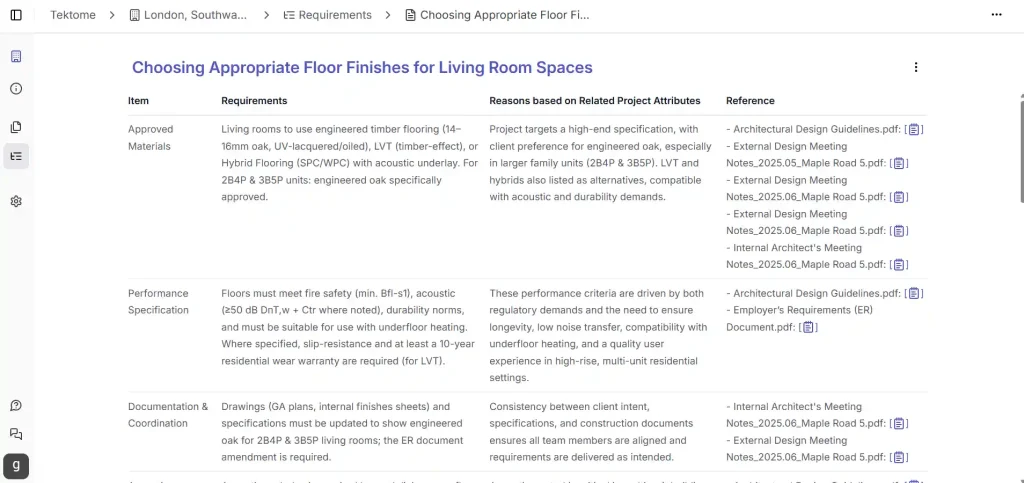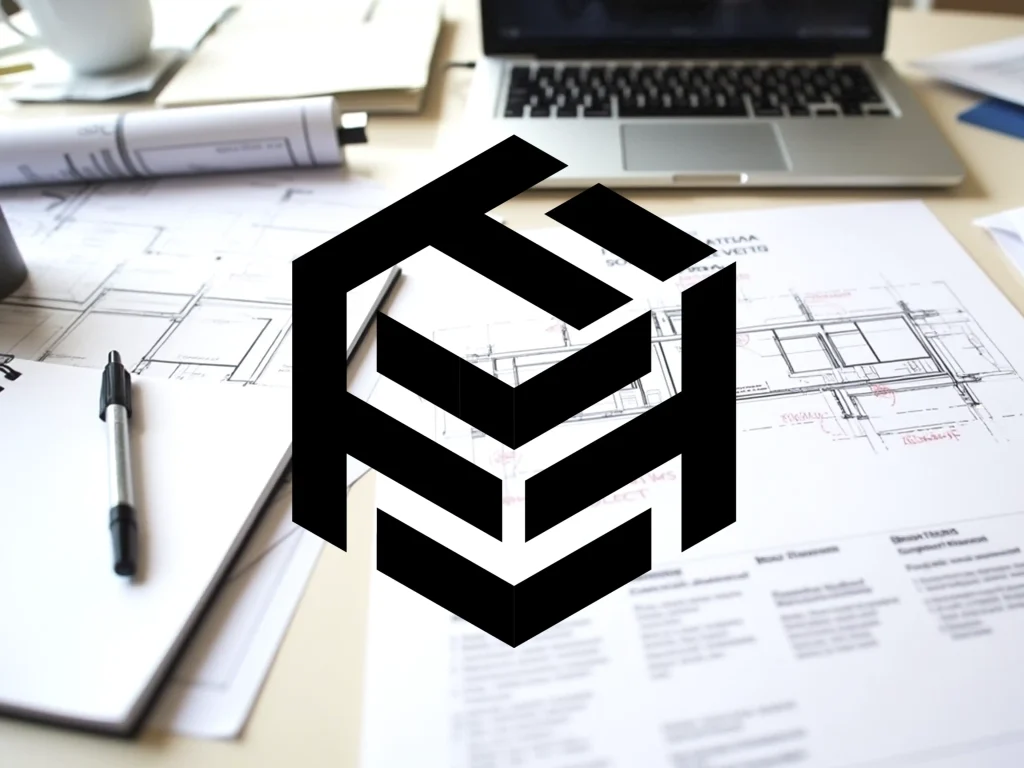Every architect knows the paper trail that accumulates as a project progresses. From concept design through construction documents, each stage involves dozens of meetings – and each meeting generates its own notes, minutes, and to-dos.
Over the lifespan of an architectural project, you can easily end up with hundreds of meeting notes and requirement documents. Effectively managing this mountain of information is essentially a requirements management challenge. How do you distill all those scattered details into a single, clear requirements summary that everyone can follow? This article tackles that question.
The High Cost of Information Overload
When critical requirements are scattered across hundreds of pages of meeting minutes and emails, several problems arise:
- Wasted Time and Lost Clarity: Architects and engineers often waste time digging through notes for key details. With nearly 20% of workweeks spent searching for information, productivity can drop and crucial decisions risk being missed or duplicated due to poor visibility.
- Knowledge Transfer Challenges: If a new team member joins mid-project or a key architect leaves, bringing their replacement up to speed is daunting. Crucial context can be locked away in sprawling documentation. Inefficient knowledge sharing isn’t just inconvenient – it costs large businesses an estimated $47 million in productivity per year. Clearly, letting institutional knowledge hide in meeting transcripts is a costly mistake.
- Lack of Traceability: With requirements and decisions spread across many files, it becomes very difficult to trace why a design choice was made or when a requirement changed. Changes can slip through unnoticed. Without an easy way to connect each requirement to its source, teams risk scope creep and rework. Poor requirements management and lack of traceability are a major reason projects fail to meet their goals – 47% of project failures result from poor management of requirements.
- Compliance and Consistency Risks: Design teams must juggle building requirements, internal rules and client standards/requirements. Manually checking notes against guidelines is error-prone, and missed requirements can lead to costly design errors and rework.
From Chaos to Clarity: AI-Powered Summaries for Requirements Management
How can design teams turn this information overload into actionable insight? This is where AI-driven tools like ReqManager step in to transform hundreds of disjointed notes into a single, clear requirements summary.
Rather than manually sifting through documents, teams can leverage AI to find, organize, and summarize key information across all project documents. The goal is a “single source of truth” containing every requirement, decision, and standard that the project must follow.
ReqManager’s AI works like a tireless project analyst: it scans your meeting notes, emails (feature coming soon), standards, and building codes, then distills them into a structured summary. Key requirements and actions are clearly organised and fully traceable. Each summary item links back to the original source, so teammates can easily find the meeting note or regulation behind it. This ensures the AI-generated summary stays aligned with your documents, giving teams confidence that nothing is missed.
Several key benefits of an AI-powered requirements summary include:
- Complete Capture of Requirements: By using a tool like ReqManager you can ensure that everything is correctly captured. Even if a requirement was mentioned only briefly in a meeting, it won’t be forgotten. By systematically reading through all notes and documents, the tool provides a safety net against human oversight. Teams can move forward knowing the summary reflects the full set of client needs, design criteria, and constraints.
- Single Integrated Summary (with Cross-Checks): ReqManager allows you to upload not just internal meeting notes, but also external documents like building requirements, regulatory standards, and company design guides. The AI then cross-checks requirements against these sources, alerting you to any gaps or conflicts in one consolidated AI summary.
- Time Savings and Focus: By automating the tedious work of combing through documents, an AI summary tool frees up your team’s time. Architects and engineers can spend less time playing detective through old emails documents and more time on actual design work. The reduction in search time and confusion is significant – remember that nearly a fifth of work hours are wasted searching for info. With critical requirements surfaced in one place, teams maintain their focus on creative problem-solving instead of paperwork.
- Easier Onboarding and Collaboration: When requirements are distilled into a clear summary, onboarding becomes much easier. New team members can review the AI-generated summary instead of sifting through weeks of notes. It serves as a shared reference for the entire team, from junior staff to project leads, keeping everyone aligned. Senior members can track progress quickly, and stakeholders can see their input reflected. The result is smoother communication and fewer surprise misunderstandings.
- Built-In Traceability and Accountability: Modern AI requirements tools, such as ReqManager, embed provenance data, meaning each summarized point can reference where it came from. If months later someone questions why a certain design choice was made, you can trace it back to the originating client comment or regulation clause. Such traceability “reduces risk, keeps the team focused, and saves time by preventing scope creep” according to a report by PMI.
Tailored Summaries Specific to Your Project
A one-size-fits-all summary doesn’t work in architecture. Every project has its own requirements. That’s why ReqManager’s AI summaries are tailored to each project’s context.

The system recognises the type of project (e.g. residential vs. office) and the relevant regional requirements. It draws from regulations or uploaded client standards to generate summaries that focus only on applicable rules. The result is not a generic checklist but a custom requirements digest that reflects your project’s specific scope. By aligning with your dataset and AEC needs, the summary feels like it was crafted by an experienced team member – not an impersonal tool.
“Manage your project requirements smarter.”
This mantra is quickly becoming reality as AI takes on the heavy lifting of organizing and analyzing project information. Since many project failures stem from poor requirements management, using AI for better clarity isn’t just smart – it’s essential.
In our journey from piles of meeting notes to concise requirement summaries, we see how technology can turn chaos into clarity. Architectural design departments no longer need to feel overwhelmed by information overload. By adopting AI-powered tools like ReqManager, they can achieve a single, clear requirements summary that drives projects forward – keeping teams aligned, informed, and confident that every requirement is accounted for.
Want to see it in action? Try ReqManager free for 2 weeks and discover how much time and effort you can save. Visit tektome.com/reqmanager to get started.

